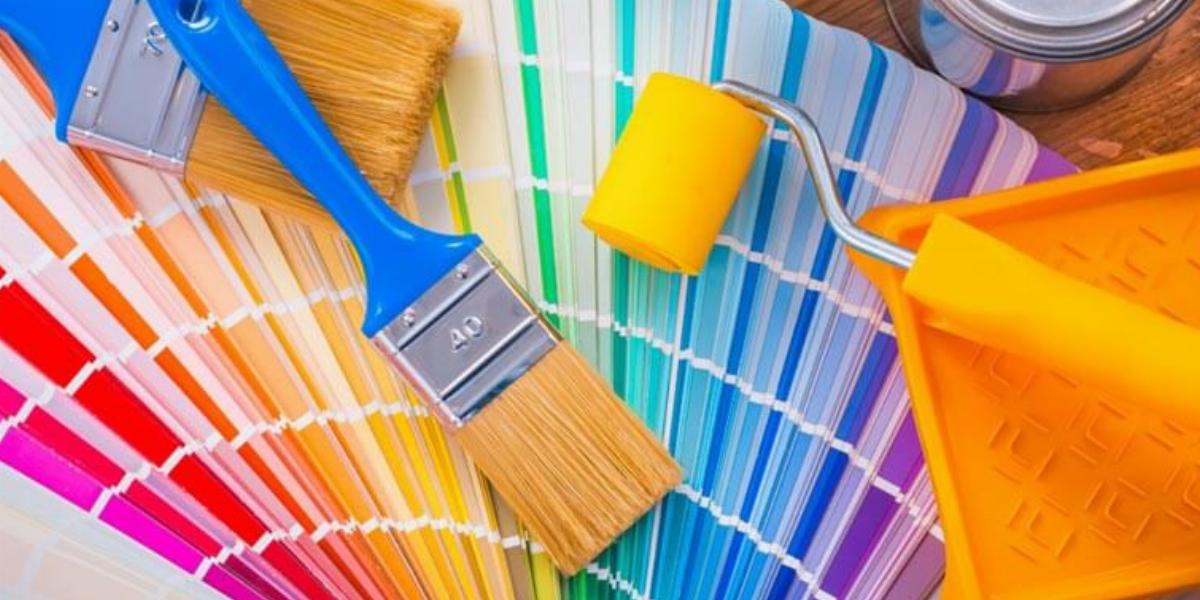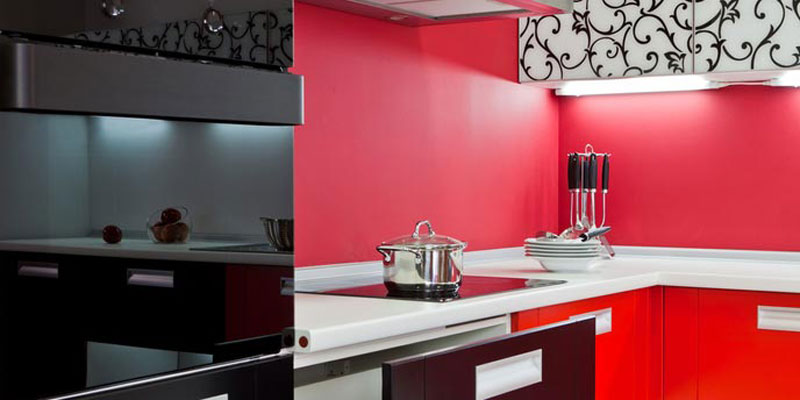
Several factors contribute to a room’s vibe, but the choice of paint color makes perhaps the biggest statement. Whether you’re looking for a bold paint color for the family room or calming tones for the bedroom, it’s important to know the psychological effects of your color choice. Before you repaint your kitchen, consider your options to make sure you set the right mood.
Active colors are warm, bright and animated. A room painted in red, orange or yellow shades stimulates the mind and energizes the space. These colors work best for:
Red introduces power, passion and confidence to your space. The ultimate active color, red increases blood pressure and stimulates appetite. That’s why it’s often found in kitchens and restaurants. Before you paint the town red, try it out on an accent wall to see how the color affects your mood.

Orange is an energetic, playful color that brings happiness and confidence. Great for playrooms and schools, bright orange paint is most suitable for youthful environments or accent walls. Use this active color in lighter tones to avoid overpowering your room.

Yellow evokes cheer, optimism and freshness. It’s a friendly, attention-grabbing color, but works best in small doses. So be careful not to overdo it – too much yellow can exhaust the eyes. Also, avoid using too much yellow in nurseries; it can activate the anxiety center of the brain, causing babies to cry more often.

Passive colors are cool, calming and serene. Greens, blues and purples are great for areas of relaxation, mental focus and introspection. These colors work best for:
Green is a stress-relieving, relaxing color, perfect for virtually any room of the house. Green cools down the room and encourages you to unwind. Combine deep mossy, greens with bright whites for a fresh seating area. The earthy tones of green also pair beautifully with wood trim and furniture. Achieve a spa-like bathroom with a cucumber green.

Blue is calming, serene and timeless. Great for bedrooms and bathrooms, blue is known to decrease blood pressure. Light blues and pastels are most notable in nurseries and country-style kitchens. On the other hand, darker blues create more of a masculine vibe, perfect for the man-cave.

Purple is a color of opulence, elegance and creativity. In its darkest hues of eggplant, purple creates a sense of luxury, drama and sophistication. Lighter lilacs and lavenders produce a restful, whimsical setting, perfect for bedrooms and bathrooms.

Neutrals give you the decorative liberty of accessorizing with either active or passive colors. Whites, light grays and sandy tans create a clean, open setting. Darker hues like blacks, deep grays and dark browns are elegant, thought-provoking and mysterious. Neutral colors work best for:
Black is powerful and authoritative. Quite the bold color choice, black can also be representative of death, evil or mourning. Be careful with this one. When utilized in areas with limited natural light, black induces a sense of confinement and mystery. But if used in good taste, a black wall can be an epic space to showcase your finest art.

Gray is known as the color of compromise, as it is a neutral, emotionless color. Gray is a steady, on-the-fence hue that acts as a stable base for nearly any room. A room with overpowering grays might cause depression, feelings of isolation or loneliness. Darker grays are dramatic and enigmatic, while light silver grays are livelier and illuminating.

White is the color of total reflection, meaning that it reflects the full force of the spectrum. White is representative of purity, simplicity and clarity. Bright whites can be sterile, unfriendly and straining to the eye, so use with cool colors for a visual compromise.

How does color impact your mood in each room of your home? Let us know in the comments below.
